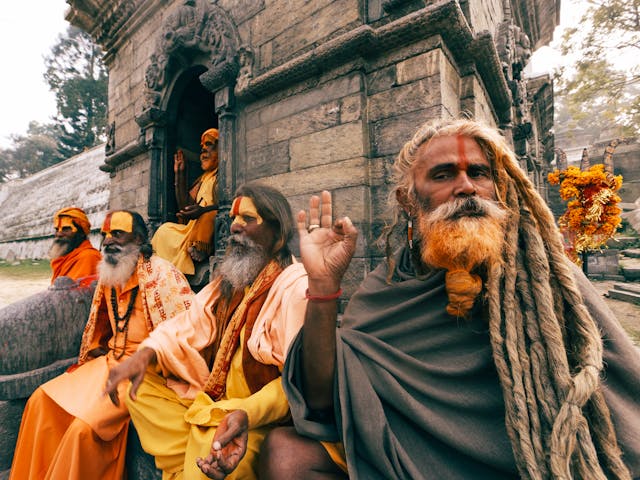Understanding and Experiencing Mystical Traditions

What Are Mystical Traditions?
Mystical traditions are spiritual practices and philosophies that seek direct, personal experiences of the divine or ultimate reality. These traditions often emphasize inner transformation, transcending the material world, and connecting with a higher power or universal truth. While they vary across cultures and religions, mystical traditions share a common goal: to explore the profound mysteries of existence and cultivate a deeper connection with the sacred.
A Journey Through Mystical Traditions
Mystical practices can be found in nearly every religious and spiritual tradition. Let’s explore a few prominent examples:
Christian Mysticism
In Christianity, mysticism involves seeking union with God through prayer, meditation, and contemplation. Saints like Teresa of Ávila and John of the Cross described profound spiritual experiences that transcend ordinary perception. Practices like centering prayer and the use of sacred texts encourage believers to connect with God on a deeply personal level.
Sufism: Islamic Mysticism
Sufism, the mystical branch of Islam, emphasizes love, devotion, and the purification of the soul. Sufi practices include dhikr (remembrance of God), poetry, music, and dance, such as the whirling dervishes. The writings of Rumi and other Sufi poets reflect themes of divine love and the longing for union with the Beloved.
Hindu Mysticism
Hinduism offers a rich tapestry of mystical traditions, including yoga, meditation, and devotion to deities. Paths like Jnana Yoga (knowledge), Bhakti Yoga (devotion), and Raja Yoga (meditation) guide practitioners toward self-realization and union with the ultimate reality, known as Brahman.
Buddhist Mysticism
Buddhism emphasizes the direct experience of enlightenment through meditation and mindfulness. Practices like Zen meditation and Tibetan visualization techniques help practitioners transcend ego and connect with the nature of reality. Mystical experiences often involve a sense of oneness and profound inner peace.
Indigenous Mystical Practices
Indigenous traditions around the world also include mystical elements, often centered on nature, ancestors, and spiritual forces. Shamanic rituals, vision quests, and the use of sacred plants are common ways to access otherworldly realms and gain wisdom.
Common Threads in Mystical Traditions
Despite their differences, mystical traditions share several common features:
-
Direct Experience: Mysticism focuses on personal, transformative encounters with the divine or ultimate reality, rather than relying solely on scripture or doctrine.
-
Inner Transformation: Mystics often undergo profound changes in their perception, behavior, and understanding of life.
-
Transcendence: Mystical practices aim to transcend the physical world, the ego, and the limitations of ordinary consciousness.
-
Unity: Mystical experiences often involve a sense of oneness with all existence or the divine.
Experiencing Mysticism: Practical Approaches
You don’t need to belong to a specific tradition to explore mystical practices. Here are some ways to begin:
-
Meditation: Cultivate stillness and focus your attention inward. Techniques like mindfulness, breath awareness, or mantra repetition can help you deepen your awareness.
-
Contemplation: Reflect on spiritual texts, nature, or profound questions about existence. This practice can lead to insights and a deeper connection with the divine.
-
Rituals and Symbols: Engage with meaningful rituals, sacred objects, or practices from a tradition that resonates with you.
-
Silence and Solitude: Spend time in quiet environments to listen to your inner voice and connect with a higher presence.
-
Service: Acts of kindness and service can open your heart and create a sense of unity with others and the divine.

The Challenges of Mysticism
While mystical practices can be transformative, they can also be challenging. Mystics often describe feelings of isolation, as their experiences may be difficult to explain to others. Additionally, the journey inward can bring up unresolved emotions or fears. It’s essential to approach these practices with patience, humility, and guidance when needed.
The Modern Appeal of Mysticism
In today’s fast-paced and materialistic world, many people are drawn to mystical traditions as a way to find meaning, inner peace, and connection. The popularity of yoga, meditation apps, and retreats reflects a growing interest in exploring the spiritual dimensions of life.
Mysticism isn’t about escaping reality—it’s about engaging with it on a deeper, more authentic level. Whether through prayer, meditation, or mindful living, mystical practices invite us to discover the profound mystery that lies within and around us.
Conclusion: A Personal Path to the Sacred
Mystical traditions remind us that spirituality isn’t just about beliefs or rituals—it’s about direct, personal experiences of the sacred. Whether you’re drawn to the poetic wisdom of Rumi, the contemplative silence of Zen, or the heart-opening practices of Bhakti Yoga, there’s a mystical path for everyone.
The journey is yours to take. Be open, be curious, and allow yourself to be transformed by the mysteries of life.












